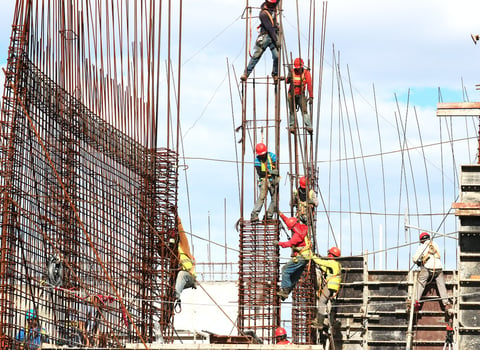Construction Asset Management Software
With customizable asset metadata fields, RedBeam can service your dynamic projects and empower visibility of equipment location, condition, and statuses, including but not limited to calculated depreciation value.
%20(1).png)
Why Consider RedBeam's Construction Equipment Tracking Software
RedBeam is an industry leader in construction equipment tracking software. Our software enables efficient monitoring of construction assets' location, status, and usage. As a result, companies can alleviate concerns about equipment location and condition by implementing construction equipment tracking software. With proper asset tracking, construction companies may avoid delays, increased costs, and potential safety hazards, which impact project timelines and budgets.
RedBeam is the go-to provider of asset management solutions for construction companies. Our comprehensive range of solutions tackles various asset tracking challenges. RedBeam empowers construction companies by providing them with RFID tags, a unified cloud-based platform, customizable data security practices, and proactive monitoring of construction assets. These features enable construction companies to improve project efficiency, reduce costs, and ensure the safety of workers and assets on site.
Asset Visibility
RedBeam's construction equipment tracking software allows businesses to easily locate their assets, identify their condition, and ensure they are in the right hands. Manually tracking assets creates unreliable asset records and impacts the ROI of your tools and equipment. RedBeam helps you quickly make accurate records for your assets and track your assets throughout each lifecycle stage – enabling more informed purchasing decisions and enhancing your investments.
Safety and Security
Construction equipment tracking software significantly improves safety and security by providing real-time location data for workers and equipment. For example, RFID tags can be attached to hard hats or safety vests, making tracking workers on large construction sites easier. Additionally, asset tracking software can be used to automatically track and create accurate records for each piece of equipment used on-site, helping manage maintenance and ensure safety and adherence to best practices.
Streamlined Project Management
Asset tracking streamlines project management by providing real-time data. Tracking and managing assets can be time-consuming, taking an average of 45-90 minutes per person daily. Every change made to assets in the RedBeam system is automatically date, time, and user-stamped for audit control purposes. This allows project managers to quickly identify bottlenecks or delays and take corrective action to keep the project on track.
Explore RedBeam's Asset Tracking Features
Mobile Ready
Track your assets on the go with our mobile app, compatible with phones, tablets, and Zebra Barcode or RFID scanners.
Asset Tagging
From laser-printed to durable 1D/2D (QR code) polyester and RFID labels, track assets and give employees access to essential data.
Store & Forward
All counting and scanning capabilities are available even when a network connection is not.
Smart Data Import
No need to start from scratch when you can import your existing assets and related data in seconds.
Custom Fields
Flexible ability to record your mission critical data specific to your business during all counting, reporting, and dashboards.
Rest API
Modern API infrastructure lets you leverage industry best practices for labeling, scanning, and reporting while seamlessly integrating your asset inventory with back-office systems.
Detailed History
Create audit trails that provide detailed asset history for enhanced accountability and forecasting repair, replacement, and disposal for every asset.
Role-Based Access
Provide each user within your organization with exactly the asset inventory visibility and counting capabilities needed to improve your inventory management.
Why Thousands of Leaders Trust RedBeam for Asset Tracking
RedBeam has been a key utility to manage our large inventory of tools, and it has increased productivity and improved tool management. We chose RedBeam because it's as simple as it gets. It's really easy to use.
R. Hernandez, Internova Electrical Contractors
Calculate Your Savings With RedBeam's Asset Tracking
RedBeam's construction equipment tracking software supports companies in making informed decisions regarding implementing RFID technology, prioritizing optimization efforts, and estimating the expected benefits and returns on investment. Explore your potential savings with our effortless ROI calculator.
Construction Industry Leaders Use Asset Tracking Software

Asset Management Challenges in Construction
Nov 21, 2022 · 1 minute read
The construction industry has faced and continues to face tremendous challenges. While these challenges can come from various causes, they all have in common: they can be lessened by using ...
Read More about Asset Management Challenges in Construction